Situatie
If you’ve ever opened up your computer, you know there is a lot of hardware in there. It’s all a potential point of failure. There are certain pieces of hardware which are more prone to failure than others.
Equipment that either generates heat or has moving parts tends to fail most often. Thanks to computer hardware tests, you can scan your system and spot failing hardware before everything crashes.
What Can Go Wrong With PC Hardware?
The parts that most commonly break are fans, hard disk drives, CPUs, and GPUs.
RAM also tends to fail too. It is continually being written and re-written to (flashed). Solid-state memory can only handle so many flashes before it begins to fail. The problem also applies to solid-state hard drives.
The best way to avoid being caught out is to perform regular hardware diagnostic tests on your computer. Here’s how to do hardware tests on Windows 10.
Windows 10 Hardware Diagnostic Tools
Windows 10 has two built-in hardware diagnostic tools. The first analyzes system performance on your computer and the second runs memory tests on your Windows 10 PC.
- Performance Monitor
- Windows Memory Diagnostic
Solutie
Pasi de urmat
Performance Monitor
Performance Monitor is a native desktop app on Windows 10. It’s the operating system’s most holistic tool for locating and diagnosing hardware and system issues.
To open the app, search for its name in Cortana and click on the link. You may have to wait for a few seconds while the app collects data.
If you want a quick overview of your system’s hardware, use the left-hand panel to navigate to Reports > System > System Diagnostics > [Computer Name].
It provides you with multiple checks for your hardware, software, CPU, network, disk, and memory, along with a long list of detailed statistics.
Dig a little deeper, and you’ll find live performance graphs (in Monitoring Tools > Performance Monitor) and customizable data sets (in Data Collector Sets).
Windows Memory Diagnostic
A computer’s central processing unit (CPU) uses RAM to store short-term information. Anything contained in the RAM is lost when you turn off your machine.
There are lots of warning signs when your RAM is close to failing. They include worsening performance, frequent crashes, video cards failing to load on boot, corrupted data files, and incorrect RAM information in the Windows System app.
If you’re wondering how to run a memory test on the RAM, you need to use the Windows Memory Diagnostic tool.
It works by writing to, then reading, your computer’s RAM. Differing values signal faulty hardware.
To launch the tool, press Windows + R to open the Run window, then type mdsched.exe and hit Enter. Windows will prompt you to restart your computer.
The test will take a few minutes to complete. When it’s over, your machine will once again restart. You’ll see the results of the screen once you return to the Windows desktop.
(If Windows doesn’t automatically show you the results, open the Event Viewer by right-clicking on the Start button, then head to Windows Logs > System and find the most recent file called MemoryDiagnostic.
Third-Party Hardware Diagnostic Apps
If you’re looking for something specific or a little more powerful, you’ll need to turn to third-party software.
There is a lot to choose from, but here are four of the best computer diagnostic apps.
1. MemTest86
MemTest86 is well established as the best tool to test your RAM on Windows. It’s more powerful than Microsoft’s Windows Memory Diagnostic tool.
The app has 13 different RAM testing algorithms and supports DDR4, DDR2, and DDR3 RAM. You can boot it directly from a USB stick or a CD, and Microsoft has signed the app’s code for Secure Boot compatibility.
Unlike the Windows tool, MemTest86 also has a full-featured graphical interface.
2. CrystalDiskInfo
If you want to focus on testing your hard drives, you should install CrystalDiskInfo.
The app’s key feature is the “Self-Monitoring, Analysis, and Reporting Technology” (SMART) test. It provides data about several aspects of your drives, including the read error rate, a count of reallocated sectors, the spin-up time, and a whole lot more.
CrystalDiskInfo also includes advanced power management and audio management tools.
And, if you leave the app running in the background, it can even provide you with live alerts if drives become too hot or are suffering from other failures.
3. HWiNFO
HWiNFO is way ahead of the pack when it comes to the amount of information provides. Indeed, if you’re new to the world of hardware testing, we recommend giving this one a wide-berth until you’re more familiar with the concepts and terminology.
From a hardware test standpoint, we are most interested in the app’s system health monitoring features. They provide detailed real-time reports and graphs about your machine’s CPUs, GPUs, mainboards, drives, and peripherals.
You can also download a bunch of add-ins that provide HWiNFO with extra functionality. They include screen tuners, widgets, and log viewers.
4. RWEverything
Finally, we’ll leave you with a tool for uber-geeks: RWEverything. It won’t win any design awards, but it’s extraordinarily powerful.
You can use it to check almost every aspect of every piece of hardware in your machine. More pertinently, you can also write to all the hardware. That means you can tweak any setting, no matter how small.
Warning: If you don’t know what you’re doing, don’t start changing settings. You risk irrevocable damaging your hardware.

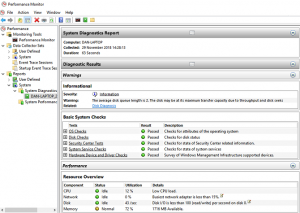
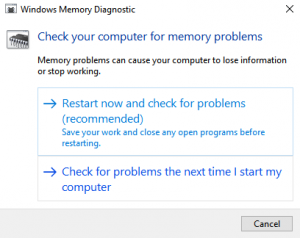
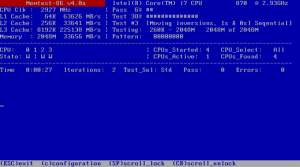
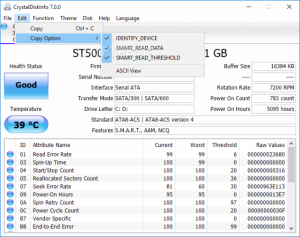
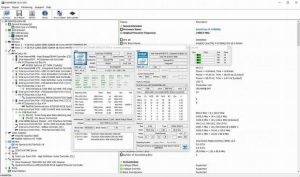
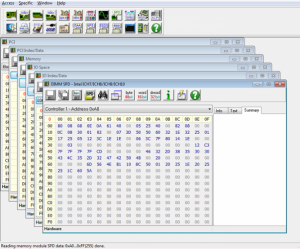
Leave A Comment?